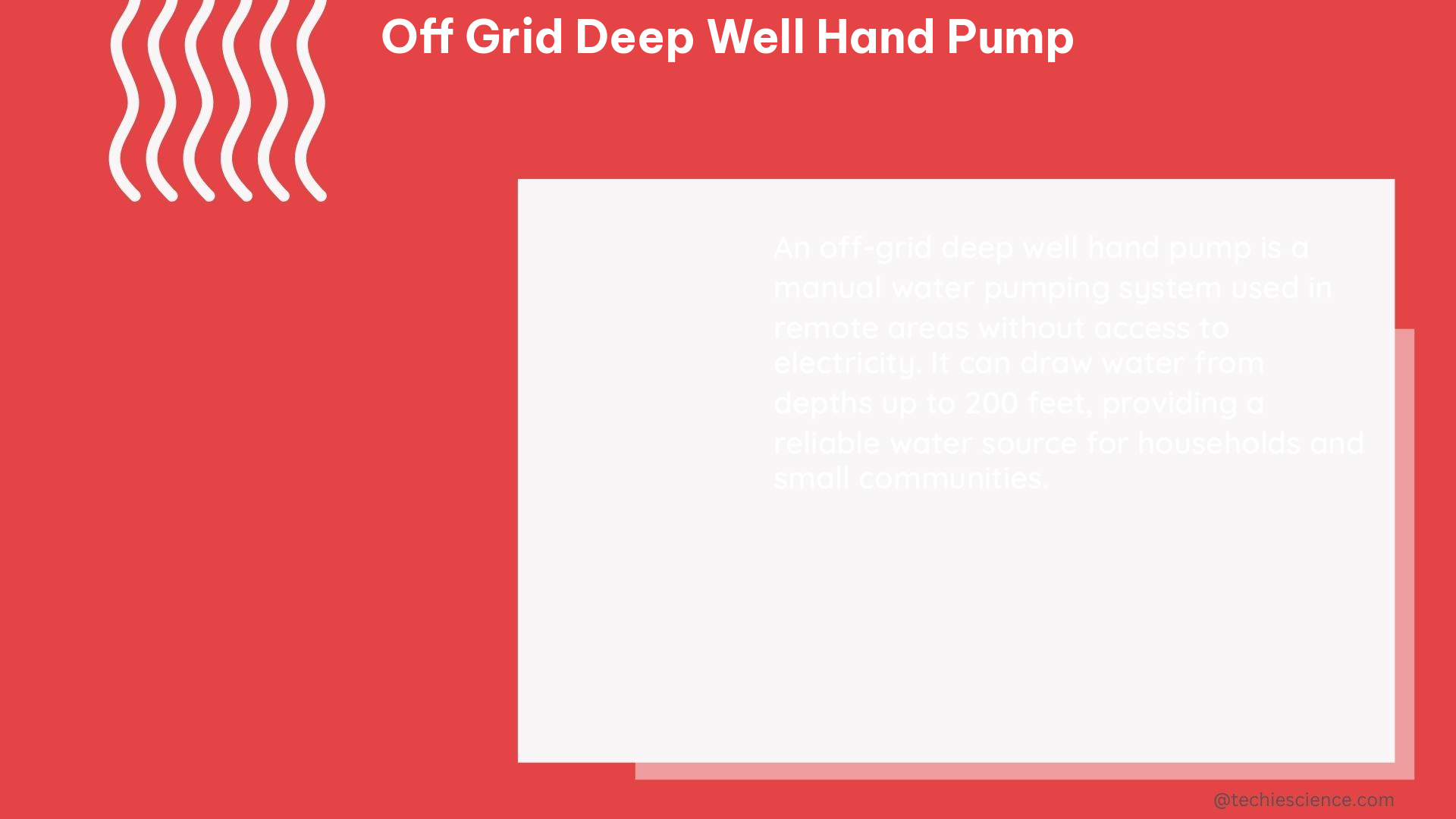Off-grid living often requires a reliable and sustainable water source, and a deep well hand pump can be a game-changer in this regard. These robust and self-sufficient systems can provide a consistent supply of water, even in remote or power-limited locations. In this comprehensive guide, we’ll delve into the key measurable and quantifiable data points that are essential for selecting, installing, and maintaining an off-grid deep well hand pump.
Well Depth: Reaching the Depths
The depth of a well can range from as shallow as 100 feet to as deep as 500 feet or more, depending on the local water table and geological conditions. In areas with a deep water table, a well depth of 300-500 feet is not uncommon. However, it’s crucial to conduct a thorough site assessment and consult with local experts to determine the optimal well depth for your specific location.
Static Water Level: Measuring the Resting State

The static water level is the depth from the land surface to the water level in a well when the pump is not in operation. This measurement is essential for determining the pump’s required lift capacity and the overall system design. For instance, in a video demonstration, the static water level was found to be at 90 feet below the surface.
Pump Depth: Positioning the Powerhouse
The pump depth refers to the depth below the surface at which the pump is installed. This depth can vary significantly, depending on the well depth and the specific pump design. In the video example, the pump was installed at a depth of 275 feet below the surface.
Drawdown: Monitoring the Impact of Pumping
Drawdown is the decrease in the water level within a well due to pumping. It’s a crucial factor in determining the well’s sustainable yield and the pump’s performance. For example, in a technical document, the well experienced a drawdown of 70 feet after 2 hours of pumping at a rate of 10 gallons per minute.
Flow Rate: Quantifying the Water Output
The flow rate is the volume of water pumped per unit of time, typically measured in gallons per minute (GPM). This parameter is essential for sizing the pump and ensuring that it can meet the water demand. While a cattle pond pump may have a flow rate of 2 GPM, a high-performance hand pump can exceed 13.8 GPM.
Pipe Size and Length: Optimizing the Delivery System
The size and length of the pipes used in the water delivery system, along with the pipe’s roughness, are critical factors in determining the friction loss. This information is necessary for calculating the overall system head and selecting the appropriate pump. In a technical document, the friction loss was calculated using these parameters.
Solar Insolation: Harnessing the Sun’s Power
For off-grid deep well hand pump systems, solar insolation, which is the power per unit area received from the Sun in the form of electromagnetic radiation, is a crucial consideration. This data is essential for designing a solar-powered water pump system that can reliably meet the water demand.
By understanding and carefully measuring these key data points, you can ensure that your off-grid deep well hand pump system is designed, installed, and maintained to provide a consistent and sustainable water supply for your off-grid living needs.
References:
- Permies.com – Off-Grid Pump Options
- NRCS Technical Note – Solar-Powered Water Pump Systems for Stockwater Design
- Mother Earth News – Living Off-Grid: A Homemade Deep Well Pump
- YouTube – How to Install a Deep Well Hand Pump
- YouTube – Deep Well Hand Pump Installation

The lambdageeks.com Core SME Team is a group of experienced subject matter experts from diverse scientific and technical fields including Physics, Chemistry, Technology,Electronics & Electrical Engineering, Automotive, Mechanical Engineering. Our team collaborates to create high-quality, well-researched articles on a wide range of science and technology topics for the lambdageeks.com website.
All Our Senior SME are having more than 7 Years of experience in the respective fields . They are either Working Industry Professionals or assocaited With different Universities. Refer Our Authors Page to get to know About our Core SMEs.